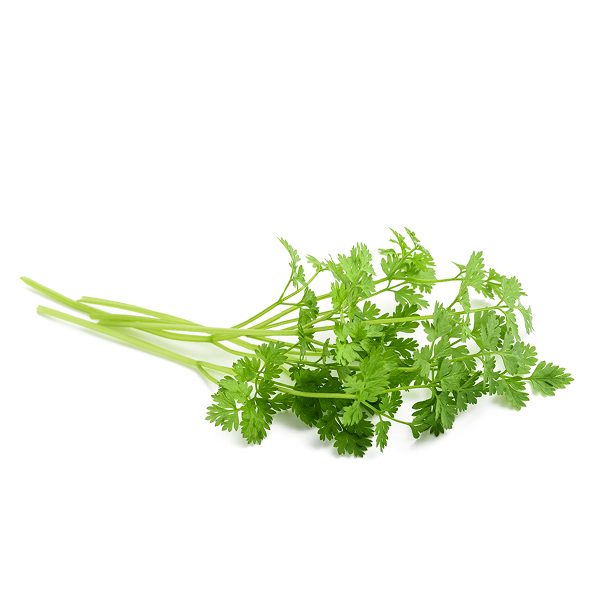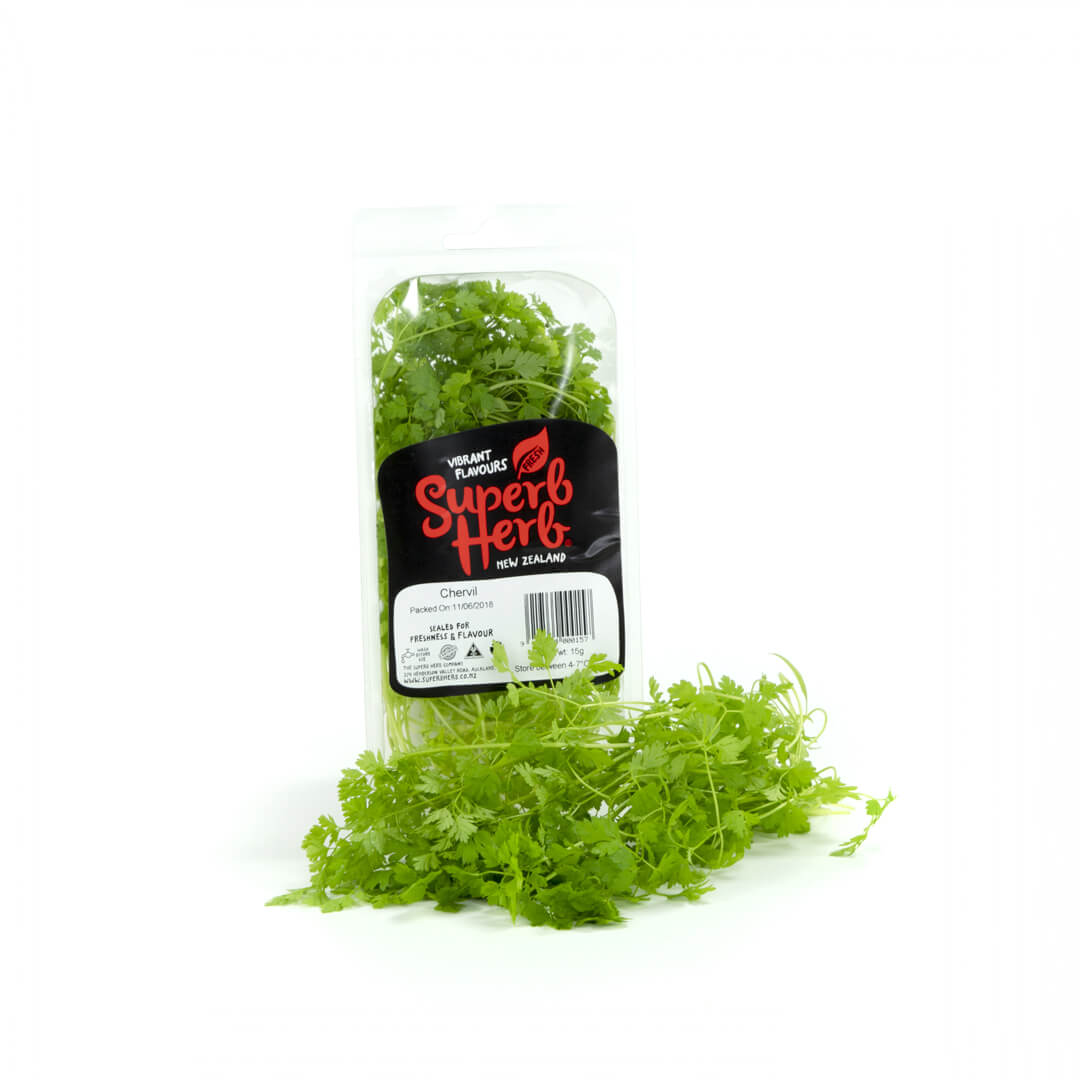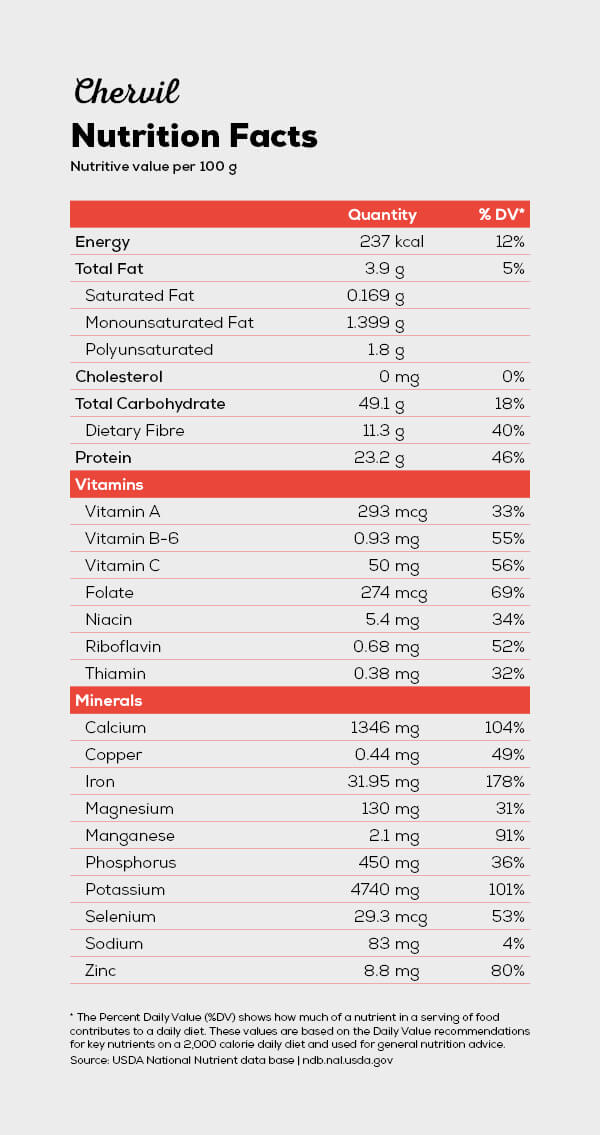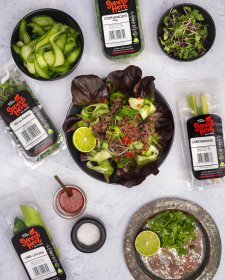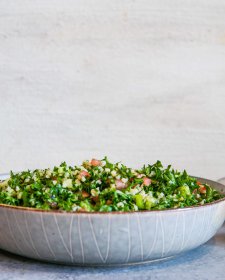Chervil
A mild, sweet aniseed flavourDid you know?
Chervil looks like a petite feathery version of flatleaf parsley and is one of the four traditional French fines herbes, along with tarragon, chives, and parsley, which are essential to French cooking.
It is commonly used to season mild-flavoured dishes.
Chervil is great for…
- Bearnaise sauce
- Butter sauces
- Salads
- Omelettes
- Soups
Pairs well with…
Poultry
Seafood
Fish
Young spring vegetables (such as carrots)
Kitchen tips
Unlike the more pungent and robust herbs (like thyme, rosemary, etc.), which can take prolonged cooking, Chervil, as all the fines herbes, should be added fresh at the last minute.
Take care of your Chervil
As a member of the Apiaceae family, Chervil prefers a cooler place and no direct sunlight.
Water little but often, if required, when the surface of the compost is dry to the touch. As Chervil is a natural rosette forming plant, it tends to collapse when taken out of its sleeve.
Keep your pre-cut pack of Chervil in the fridge, it doesn’t mind being kept cool!
Nutritional facts
Chervil is a great source for minerals and many vitamins. In 100 g of dried Chervil, there are about 230 calories, of which 6% is total fat, dietary fiber is 11.3 g, protein is 23.2 g and of course, it has no cholesterol.
Health benefits
Chervil has had various uses in folk medicine. It was claimed to be useful as a digestive aid, for lowering high blood pressure, and, infused with vinegar, for curing hiccups.

